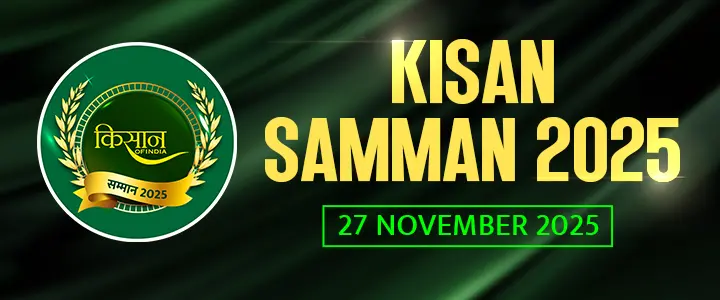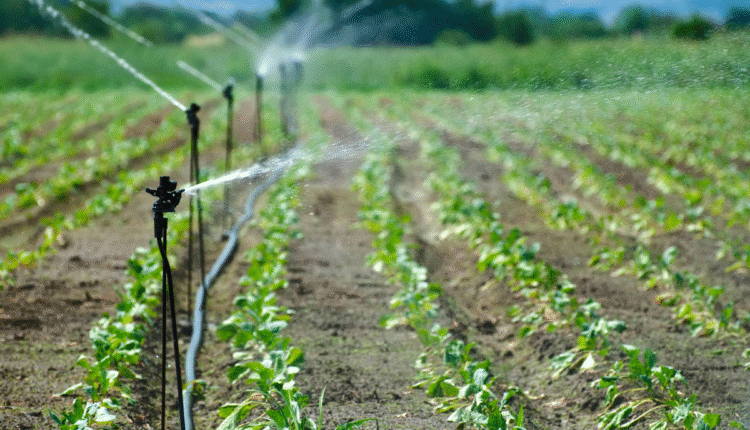Subsurface Drip Irrigation: Farming from Beneath the Soil: As water scarcity becomes a mounting crisis in many parts of the world—especially arid and semi-arid regions—farmers and scientists are digging deep, quite literally, to find smarter ways to grow food. Enter subsurface drip irrigation (SDI)—a technology that places water delivery systems underground, right at the plant’s root zone.
Paired with root-zone moisture sensors, SDI is fast becoming the gold standard in precision irrigation. This buried innovation is not only transforming water usage patterns but also improving crop yields and soil health. Let’s explore how underground farming is reshaping the agricultural landscape and giving rise to a water-wise revolution.
What is Subsurface Drip Irrigation (SDI)?
Subsurface Drip Irrigation (SDI) is an advanced irrigation technique where drip lines or tapes are buried beneath the soil surface to deliver water directly to the root zone of the plants. Unlike traditional surface irrigation or sprinklers—which lose a significant amount of water to evaporation, wind drift, or surface runoff—SDI minimizes these losses by placing the water exactly where it’s needed: at the roots.
How Deep Are the Lines Buried?
Typically, the drip lines are installed at a depth of 10 to 50 centimeters, depending on:
• The crop’s root depth
Soil type (sandy, loamy, clayey)
• Irrigation goals (short-term vs long-term crops)
This makes the system highly efficient, especially in water-scarce or drought-prone areas.
Core Components of an SDI System
Let’s break down the essential parts that make up a functional SDI setup:
1. Buried Drip Lines
These are flexible polyethylene pipes or tapes that run beneath the surface along each crop row. They have built-in emitters (small outlets) spaced evenly to allow precise water release.
2. Emitters
Emitters are pressure-compensating devices inside the drip lines that ensure each plant receives the same amount of water, even if the land is uneven or the pipe is long. This maintains uniform moisture across the field.
3. Filtration Units
Since the system operates underground and has narrow outlets, even tiny particles can clog it. Filtration units (like screen, sand, or disc filters) are essential to clean the water—especially when using canal water, river water, or untreated sources.
4. Root-Zone Moisture Sensors
These are electronic or mechanical devices placed near the roots that monitor soil moisture in real-time. They help in:
• Deciding when to irrigate
Avoiding over-watering or under-watering
• Saving water and electricity
Some advanced systems transmit data to a smartphone app or cloud platform, enabling remote monitoring.
5. Automation Controls
Modern SDI systems often integrate automated valves and timers, connected to sensors or weather data. This allows for:
Scheduled watering based on plant needs
• Responsive irrigation during dry spells
• Fertigation (fertilizer + irrigation) at root level for better nutrient use
Why SDI Matters
By delivering water right at the root zone:
• It reduces evaporation (especially crucial in hot climates)
Limits weed growth (since the soil surface remains dry)
Helps conserve water—up to 40–60% savings compared to surface irrigation
• Encourages deeper root growth and better plant health
The Science Behind Root-Zone Moisture Sensing
Moisture sensors installed in the root zone monitor the soil’s volumetric water content. These sensors (resistive, capacitive, or tensiometric) provide real-time data, which is fed into irrigation controllers or cloud-based platforms. This enables:
• Precision watering
Prevention of over-irrigation or under-irrigation
• Reduced manual intervention
In advanced systems, Artificial Intelligence algorithms can analyze data from multiple sensors to optimize irrigation cycles across different field zones.
Why It’s a Game-Changer for Arid Zones in India
India’s arid and semi-arid zones—which constitute nearly 40% of the country’s land area—are on the frontlines of water stress. With declining groundwater levels and erratic rainfall, subsurface drip irrigation (SDI) is proving to be a breakthrough in regions like Rajasthan, Maharashtra, and Karnataka, where traditional irrigation methods are increasingly unsustainable.
Case Study 1: Jalgaon, Maharashtra – Banana Cultivation Revolution
In Jalgaon, often called the Banana City of India, farmers using surface flood irrigation were losing up to 50% of water through evaporation and percolation. After switching to subsurface drip systems installed at 20–25 cm depth:
• Water savings reached 40–50%
Yield increased by 25–30%
Uniform water delivery also reduced soil salinity
• Farmers reported higher bunch weights and reduced cycle times
These results were part of a pilot study supported by Jain Irrigation Systems, India’s largest micro-irrigation company, which also trains farmers in SDI maintenance and fertigation.
Case Study 2: Tumkur, Karnataka – Tomato and Chilli Farmers Benefit
In the drought-prone Tumkur district, under the Krishi Bhagya Yojane (a Karnataka state scheme), smallholder farmers installed SDI systems for tomato and chilli farming. Root-zone sensors were installed to guide irrigation cycles.
Findings from the Department of Horticulture:
• Water use efficiency improved by 60%
Yield of tomatoes increased by 28%
Labour costs were reduced due to automation
Less weed growth resulted in lower pesticide usage
With SDI buried 30 cm deep and automation tied to sensor data, many farmers now irrigate only when sensors detect moisture below threshold levels—turning guesswork into precision.
Case Study 3: Jodhpur, Rajasthan – Pearl Millet and Mungbean Trials
In western Rajasthan’s CAZRI (Central Arid Zone Research Institute) campus, experimental SDI systems were tested on Bajra (pearl millet) and moong (green gram) plots over three seasons.
Key outcomes:
• SDI plots used 47% less water than surface irrigation
Yield increased by 22% in bajra and 30% in mungbean
Better root development due to uniform moisture in topsoil layers
• Higher nutrient uptake when fertilizers were applied via SDI
These findings were later used to propose state-level policy support for adopting buried drip systems in the Desert Development Programme regions.
Key Benefits
• Up to 40–60% water savings compared to conventional irrigation
Higher crop yields (15–30% increase) due to consistent moisture at roots
Reduced weed growth, since water isn’t available at the surface
Lower salinity buildup, as salt isn’t drawn to the surface by evaporation
• Enhanced fertilizer use efficiency (fertigation-friendly)
Challenges and Limitations
While promising, SDI isn’t without hurdles:
• High initial cost: Installation can cost ₹80,000 to ₹1,50,000 per hectare
Clogging issues: Needs excellent filtration and regular maintenance
Root intrusion: Can damage emitters over time
• Difficult repairs: Since lines are buried, troubleshooting requires expertise
However, as technology advances and government subsidies increase, SDI is becoming more accessible, even to small and marginal farmers.
The Policy and Market Outlook
Governments across the globe are acknowledging the potential of SDI:
• India’s Pradhan Mantri Krishi Sinchai Yojana (PMKSY) includes micro-irrigation subsidies for SDI systems.
The FAO and World Bank promote SDI in climate-resilient farming strategies.
• Startups and Agri-tech firms are offering bundled solutions combining SDI, IoT sensors, and agronomic support.
The Indian market alone for micro-irrigation is expected to grow at 15% CAGR, with SDI capturing increasing share due to its sustainability promise.
Future of Underground Farming
SDI, integrated with smart agri-platforms, will be central to:
• Climate-smart agriculture
AI-based crop advisory systems
Organic farming (reducing foliar contact)
• Protected cultivation (net houses, polyhouses)
Research is also underway into biodegradable drip lines, nanotech filters, and multi-crop adaptive SDI layouts, which may soon redefine the scalability of underground irrigation.
Digging Deeper for a Sustainable Future
In the age of depleting water tables and unpredictable climate, subsurface drip irrigation offers a promising path forward. It’s not just about saving water—it’s about delivering it intelligently, sustainably, and where it matters most.
Underground farming is no longer science fiction—it’s science in action. As more farmers adopt these innovations, the roots of a new agricultural revolution are quietly taking hold—just beneath the surface.
Contact details: If farmers want to share information or experiences related to farming with us, then they can do this by calling us on the phone number 9599273766 or by writing an email to [email protected] or by sending your recording. Through Kisan of India, we will convey your message to the people, because we believe that if the farmers are advanced then the country is happy.



